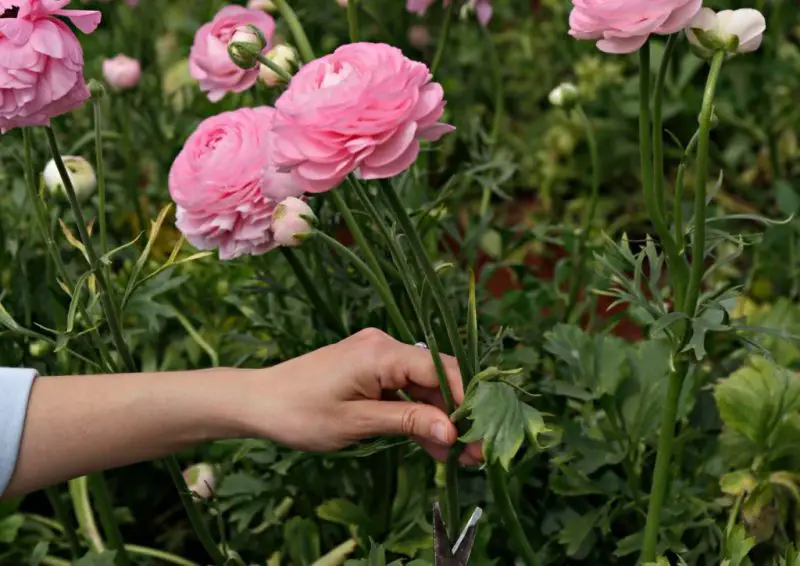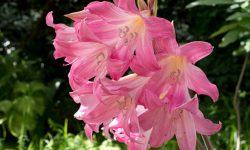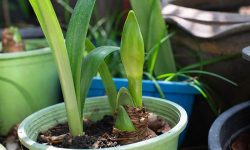Ranunculus are among the most captivating spring flowers, prized for their layered, rose-like blooms and vibrant colors. These plants bring elegance and cheer to any garden, container, or floral arrangement. However, to maintain their beauty throughout the growing season, proper care is essential. One of the most effective ways to extend the flowering period and enhance plant health is deadheading, the careful removal of spent flowers. Deadheading encourages the plant to redirect energy from seed production back into producing new blooms, resulting in longer-lasting displays. Understanding the correct techniques and timing ensures that your ranunculus remain vibrant and healthy, producing successive waves of blossoms.
Deadheading may seem simple, but it requires attention to detail and consistency. Removing faded flowers at the right time prevents disease, maintains plant shape, and stimulates additional flowering. In addition to promoting aesthetic appeal, this practice also strengthens the plant’s overall structure, resulting in sturdier stems and fuller blooms. Gardeners who master deadheading techniques enjoy extended seasons of color and lush, thriving ranunculus. This article provides expert guidance on how to deadhead ranunculus, including the tools, timing, and best practices needed to keep your garden flourishing with brilliant, long-lasting flowers.
Why Deadheading Ranunculus Matters

Deadheading ranunculus is a crucial gardening practice that directly influences both the health of the plant and the longevity of its blooms. Once a flower has faded, it begins diverting energy into seed production, which can reduce the plant’s ability to generate new blossoms. By removing spent flowers promptly, gardeners ensure that the corms focus their energy on producing additional blooms rather than seeds. This simple act extends the flowering period, allowing ranunculus to display vibrant colors for a longer time. In addition, deadheading helps maintain a tidy and attractive appearance, preventing unsightly wilted blooms from dominating the garden bed.
Another important benefit of deadheading is disease prevention. Faded flowers left on the plant can accumulate moisture, attracting fungal pathogens and pests. Botrytis blight, powdery mildew, and other common fungal issues thrive on decaying plant material. Removing spent flowers reduces this risk and improves airflow around the foliage. Healthy plants with unobstructed air circulation are less likely to experience disease, ensuring stronger stems, fuller blooms, and a more resilient garden overall. Regular deadheading also promotes even growth, preventing one part of the plant from becoming overly crowded or overshadowing newer shoots.
Furthermore, deadheading encourages consistent and robust blooming. Each removal stimulates the plant’s natural growth response, prompting more buds to form and open. Over time, this practice can result in a fuller, more uniform floral display that delights the eye throughout the season. For gardeners aiming to maximize the visual impact of their ranunculus, understanding and implementing proper deadheading techniques is essential. By combining aesthetic maintenance with plant health benefits, deadheading ensures that your ranunculus remain a centerpiece of beauty and color in any garden or floral arrangement.
When to Deadhead Ranunculus for Optimal Results
Timing is critical when deadheading ranunculus to ensure maximum bloom production and plant health. The best moment to remove spent flowers is just after the petals begin to wilt or fade. Waiting too long allows the plant to shift energy toward seed formation, which reduces new bud development. Observing your plants daily during peak blooming periods helps identify fading flowers early. Consistent monitoring ensures that each removed flower contributes to a longer and more productive flowering season.
Early removal of spent blooms also prevents potential disease issues. Fading flowers that remain on the plant can trap moisture, creating a favorable environment for fungal pathogens such as botrytis and powdery mildew. By removing blooms promptly, you reduce the risk of infection and improve airflow around the plant. Deadheading at the right time maintains a tidy appearance while supporting the overall vigor of the ranunculus, resulting in stronger stems and healthier foliage that support successive flowering cycles.
The frequency of deadheading depends on the size and density of your ranunculus planting. In small garden beds or containers, you may need to check daily, especially during peak bloom periods, to maintain optimal results. Larger plantings may require a thorough inspection every two or three days to remove fading flowers efficiently. Regularly deadheading at the right stage maximizes energy allocation to new blooms and enhances the plant’s natural growth rhythm. With proper timing, ranunculus will continue to produce bright, layered flowers, offering a consistently colorful and captivating display throughout the growing season.
Tools and Techniques for Deadheading Ranunculus
Using the right tools and techniques makes deadheading ranunculus more efficient and prevents damage to the plant. The most common and effective tool is a pair of sharp, clean scissors or garden shears. Clean cuts reduce the risk of transmitting diseases between flowers and minimize stress on the stems. Avoid tearing or twisting faded blooms off, as this can damage healthy tissue and slow growth. For smaller blooms or delicate stems, fine-point scissors provide better control and precision. Sterilizing your tools with rubbing alcohol before use further protects plants from pathogens.
When deadheading, focus on cutting the stem as close to the base as possible, just above the first set of healthy leaves. This ensures that no decaying tissue remains, which could invite fungal infections or pests. Always inspect the surrounding foliage while cutting, removing yellowed or damaged leaves simultaneously. Deadheading encourages the plant to redirect energy from old blooms to new bud formation, promoting fuller and longer-lasting flowering. In dense plantings, work methodically from one side of the bed to the other to ensure no faded blooms are missed.
In addition to proper cutting, adopting gentle handling techniques protects the plant and supports continued growth. Avoid stepping on the roots or compacting the soil around the corms, as ranunculus are sensitive to disturbance. Watering lightly after deadheading can reduce stress and help the plant recover quickly. Consistently applying these tools and techniques ensures that each ranunculus plant remains vigorous, producing bright, healthy blooms throughout the season. With the correct approach, gardeners can enjoy extended flowering, maintaining a vibrant and colorful display in both garden beds and containers.
Encouraging Continuous Blooming After Deadheading
Deadheading ranunculus not only improves the plant’s appearance but also directly stimulates new flower production. Once spent blooms are removed, the plant redirects its energy from seed formation into developing additional buds. This natural response encourages continuous blooming, extending the overall flowering season. For gardeners seeking long-lasting color, regular and timely deadheading is essential. By keeping the plant focused on producing new flowers, you ensure a steady succession of vibrant, fully layered blossoms throughout spring and early summer.
To maximize continuous blooming, monitor the plants carefully after each round of deadheading. Look for emerging buds and make sure they have sufficient light, water, and nutrients to develop properly. Adjust watering schedules as the weather changes, providing slightly more moisture during dry spells without saturating the soil. Fertilization also plays a crucial role at this stage; a balanced liquid feed every two weeks can support vigorous growth and enhance flower size and color intensity. Healthy plants recover faster after deadheading and produce more prolific blooms.
Additionally, consider the spacing and air circulation of your ranunculus beds. Crowded plants can shade new shoots and slow bud development. Thin out weaker stems or replant crowded areas to maintain airflow and sunlight penetration. Companion planting with low-growing annuals or perennials can also help keep the soil moist and reduce pest pressure. By combining proper deadheading techniques with attentive care, your ranunculus will thrive, producing continuous waves of brilliant flowers that transform your garden into a colorful, lively display for weeks on end.
Fertilizing Ranunculus for Extended Blooming
Fertilizing ranunculus properly is essential for promoting strong growth and prolonged flowering. These plants thrive in nutrient-rich soil that supports both root development and vibrant blooms. Before planting, incorporate well-rotted compost or organic matter to improve soil structure and provide a slow-release source of nutrients. Once the shoots emerge, applying a balanced fertilizer with equal parts nitrogen, phosphorus, and potassium encourages healthy leaves, robust stems, and early flower formation. Regular feeding ensures that plants have the resources to produce multiple waves of blooms throughout the season.
During peak flowering, it is beneficial to switch to a fertilizer higher in phosphorus and potassium. These nutrients specifically support flower production and enhance color intensity. Apply liquid fertilizer every two to three weeks, making sure to water the plants beforehand to prevent root burn. Avoid overfertilizing, as excessive nitrogen can lead to lush foliage at the expense of blooms. Proper fertilization supports not only flower quantity but also the overall health of the plant, resulting in more resilient stems and glossy, strong leaves that sustain multiple flowering cycles.
As the blooming season comes to an end and foliage begins to yellow, stop fertilizing entirely. The plant is preparing to enter dormancy, and excess nutrients at this stage can interfere with corm development for the next year. Allow the leaves to die back naturally so that energy and nutrients are stored in the corms. Consistent and well-timed fertilization ensures that ranunculus produce abundant, vibrant flowers and return even stronger the following season. With careful feeding, gardeners can enjoy continuous color and vitality from their ranunculus beds year after year.
Protecting Ranunculus from Pests and Diseases
Preventing Common Pests
Ranunculus are susceptible to a variety of garden pests that can damage foliage and reduce flowering. Aphids, spider mites, and thrips are among the most frequent offenders, feeding on plant sap and weakening stems. These insects can appear quickly during warm, dry conditions and reproduce rapidly if not controlled. Regularly inspect plants, especially the undersides of leaves, for signs of infestation such as curling leaves, sticky residue, or visible insects. Early detection is key to managing pest populations effectively. Using insecticidal soap or neem oil provides an organic, safe solution for controlling minor infestations while minimizing harm to beneficial insects.
Garden hygiene also plays a crucial role in preventing pests. Remove fallen leaves and debris around the base of plants to eliminate hiding spots for insects and their eggs. Avoid over-fertilizing, particularly with nitrogen, which encourages tender new growth that pests prefer. Companion planting with marigolds, lavender, or other pest-repellent species can provide additional protection naturally. Maintaining proper spacing between plants ensures good airflow, which reduces the likelihood of pest colonization and keeps ranunculus healthy and vibrant throughout the growing season.
Avoiding and Managing Diseases
Fungal diseases are another common concern for ranunculus, especially in wet or humid conditions. Root rot, botrytis blight, and powdery mildew can develop if the soil remains waterlogged or the foliage stays damp for long periods. To prevent these issues, ensure proper drainage and water at the base of the plant rather than over the leaves. Spacing plants adequately improves airflow and reduces humidity around the foliage, lowering the risk of infection. Promptly remove any infected leaves or stems and dispose of them away from the garden to prevent disease spread.
Preventive treatments can also support plant health. Organic fungicides or natural remedies like a diluted baking soda solution help protect plants during rainy periods. Crop rotation, planting in fresh soil each year, and maintaining nutrient-rich, well-draining soil further reduce susceptibility. Healthy, vigorous ranunculus resist infections better and recover faster if disease occurs. By combining careful observation, preventive measures, and timely intervention, gardeners can keep ranunculus free from pests and diseases, ensuring abundant, bright blooms throughout the season.
Encouraging Continuous Blooming Through Deadheading
Deadheading ranunculus is more than just a cosmetic task; it actively stimulates new flower production. Once spent blooms are removed, the plant redirects its energy from seed formation into creating fresh buds. This ensures that your ranunculus continue producing vibrant flowers throughout the season. Regular deadheading maintains a tidy appearance, prevents disease, and allows the plant to focus on growth rather than maintaining old blooms. By staying consistent with this practice, gardeners can enjoy a prolonged flowering period that keeps the garden colorful and lively.
The key to successful deadheading lies in timing and technique. Remove faded flowers promptly, cutting the stem just above the nearest healthy set of leaves. Avoid pulling or twisting the blooms off, as this can damage surrounding stems and slow growth. Observing the plants daily during peak bloom periods helps identify which flowers need removal. Combining deadheading with adequate watering and balanced fertilization enhances the plant’s response, encouraging strong new growth and more frequent blooms.
In addition to promoting continuous flowering, deadheading supports the overall health and structure of ranunculus. Removing old blooms reduces the risk of fungal infections and improves airflow around the foliage. This strengthens stems and keeps leaves healthy, creating an optimal environment for successive flowers. Over time, consistent deadheading results in fuller, more uniform displays, enhancing the visual appeal of garden beds or containers. By mastering deadheading techniques, gardeners can maximize bloom quantity and quality, enjoying a vibrant and thriving ranunculus garden throughout the growing season.
Timing Fertilization After Deadheading
Fertilizing ranunculus immediately after deadheading is key to sustaining continuous growth and maximizing flower production. Once spent blooms are removed, the plant naturally redirects energy toward developing new buds. Providing nutrients at this stage ensures stronger stems, larger flowers, and healthier foliage. Using a balanced liquid fertilizer every two to three weeks gives plants a steady supply of essential nutrients without overwhelming them. This helps maintain vigorous growth and supports the development of successive blooms throughout the season.
Timing is critical for the effectiveness of fertilization. Nitrogen promotes leafy growth, phosphorus stimulates flower formation, and potassium strengthens stems, allowing the plant to produce more vibrant and resilient flowers. Avoid over-fertilizing, as excessive nitrogen can lead to lush foliage with fewer blooms, undermining the benefits of deadheading. Adjust fertilization according to soil quality, plant health, and seasonal growth patterns. Combining timely feeding with consistent watering ensures that ranunculus recover quickly from bloom removal and continue producing high-quality flowers.
Regular post-deadheading fertilization enhances both the quantity and quality of blooms. Plants respond faster to nutrient availability after spent flowers are removed, encouraging new bud formation and a longer flowering period. Careful timing ensures that energy is efficiently redirected, supporting robust, full stems and richly colored petals. By integrating timely fertilization with proper deadheading, gardeners can maintain a vibrant ranunculus display throughout spring and early summer, enjoying an extended season of dazzling, layered flowers that captivate the eye.
Mulching and Soil Care for Longer Blooming
Proper mulching and soil management are essential for sustaining healthy ranunculus and extending their flowering period. Mulch helps retain soil moisture, preventing the roots from drying out during warm, sunny days. Organic options like straw, compost, or shredded leaves provide slow-release nutrients while insulating the soil, keeping temperatures stable. By maintaining consistent moisture levels and temperature, mulch supports vigorous growth and encourages successive blooms after deadheading. Additionally, mulching reduces weed competition, allowing ranunculus to absorb more nutrients and water efficiently, which strengthens stems and promotes abundant flowers.
In addition to mulching, maintaining well-aerated, nutrient-rich soil is crucial. Regularly loosen compacted soil around the plants to improve root access to water and nutrients. Remove fallen leaves or plant debris that can harbor pests or fungal pathogens. Well-drained soil prevents waterlogging, reducing the risk of root rot and other common diseases. Incorporating organic matter into the soil improves texture and fertility, ensuring that ranunculus have a strong foundation to support repeated flowering cycles. Healthy soil maximizes the energy available for bloom production and overall plant vigor.
Combining mulching and proper soil care enhances the benefits of deadheading and fertilization. Mulch helps conserve moisture while regulating temperature, and well-prepared soil ensures optimal nutrient uptake. Together, these practices encourage robust growth, longer-lasting stems, and brighter, more numerous blooms. Gardeners who prioritize soil and mulching management will enjoy an extended flowering season with vibrant, fully layered ranunculus, creating a visually stunning and resilient garden display that lasts throughout the spring and early summer.
Companion Planting to Enhance Ranunculus Growth
Companion planting can significantly improve both the aesthetics and health of ranunculus in your garden. Pairing ranunculus with compatible flowers or low-growing perennials creates visual contrast, highlights the delicate layered petals, and produces a more dynamic, colorful display. Plants with similar water and sunlight requirements, such as pansies, violas, or early spring perennials, complement ranunculus without competing for resources. This approach not only enhances beauty but also encourages balanced growth by maintaining proper spacing, which reduces overcrowding and promotes stronger, healthier plants.
In addition to visual appeal, companion planting offers practical benefits. Some companion species help retain soil moisture, regulate temperature, and deter common pests naturally. For instance, aromatic herbs like lavender or rosemary can discourage insects while providing a fragrant garden atmosphere. Planting low-growing ground covers around ranunculus helps reduce weed competition, keeping the soil nutrient-rich and promoting vigorous growth. By choosing the right companions, gardeners can support continuous blooming while maintaining overall plant health.
Proper placement and spacing are essential for maximizing the benefits of companion planting. Ensure that taller or bushier companions do not shade the ranunculus, allowing full sunlight exposure for optimal flowering. Combining companion planting with consistent deadheading, fertilization, and soil care creates a synergistic effect, improving bloom quantity and quality. Thoughtful companion selection ensures a vibrant, resilient garden where ranunculus thrive alongside other blooms, providing extended color, texture, and interest throughout the growing season.
Common Mistakes When Deadheading Ranunculus
Removing Flowers Too Early
One common mistake gardeners make is removing ranunculus blooms before they have fully faded. Cutting flowers too early can prevent the plant from completing its natural energy cycle. Ranunculus need time to redirect nutrients from spent flowers to new bud formation. Premature removal may limit overall bloom production, resulting in fewer flowers over the season. Observing the plant closely ensures that each flower is removed at the right stage, after petals begin to wilt or fade. Timing is crucial for maximizing energy allocation, and knowing when a bloom has reached the proper stage guarantees that the plant benefits fully from deadheading.
Another consequence of early deadheading is unnecessary stress on the plant. Removing flowers before the stem and foliage are ready can damage healthy tissue, slowing growth and affecting overall vigor. In addition, early removal may reduce the visual impact of the flowering display. By waiting until blooms are fully spent, gardeners allow ranunculus to naturally complete their flowering cycle. Proper timing ensures energy is efficiently redirected, supporting robust, long-lasting flowering. Learning to identify the optimal moment for removal maximizes the benefits of deadheading, maintains plant health, and helps sustain a vibrant, colorful garden display throughout the season.
Cutting Too Close to the Base
Cutting ranunculus stems too close to the soil surface is another frequent mistake. While it may seem efficient, this practice can harm emerging shoots or damage the plant’s growing points. Maintaining a small section of stem above the first set of healthy leaves ensures that new buds have a strong foundation to develop. Proper cutting technique promotes consistent regrowth and prevents injury to the plant. Clean cuts just above the leaf nodes encourage energy to be used for new blooms rather than healing damaged tissue.
Additionally, cutting too close can leave the plant vulnerable to infections or rot. Exposed tissue may attract fungal pathogens or pests, especially in humid conditions. This can lead to weaker stems, stunted growth, or reduced flowering. By leaving a short stem segment above the leaves, gardeners protect the corms while supporting healthy, continuous blooming. Practicing careful cutting techniques allows ranunculus to recover quickly and produce successive flowers, maximizing bloom quantity. This method ensures both plant health and a tidy, attractive garden appearance that highlights vibrant, colorful blossoms.
Neglecting Regular Deadheading
Many gardeners make the mistake of deadheading ranunculus sporadically or inconsistently. Faded blooms left on the plant divert energy into seed production instead of forming new flowers. Over time, this reduces the total number of blooms and shortens the flowering season. In addition to limiting flowering, neglected plants often look untidy, as old blooms wither and discolor. Regular observation and timely removal of spent flowers ensure that the plant continuously channels its resources into generating fresh, vibrant blooms. Developing a consistent deadheading schedule helps maximize the visual and health benefits.
Neglecting deadheading can also create an environment conducive to pests and disease. Wilted flowers and decaying petals may attract insects or encourage fungal growth, compromising plant vigor. Consistent deadheading not only improves aesthetics but also maintains overall plant health. By establishing a routine, gardeners can extend the flowering period, encourage stronger stems, and ensure a fuller, more uniform display of ranunculus throughout the growing season. This disciplined approach fosters longevity and allows for a more striking, long-lasting floral arrangement in beds or containers.
Using Dull or Dirty Tools
Using unclean or blunt tools when deadheading is another common error. Dull scissors or shears can tear stems instead of making clean cuts, causing unnecessary stress and potential damage to the plant. Torn stems are more prone to disease and may take longer to heal, reducing energy available for new blooms. Dirty tools may introduce pathogens that lead to fungal or bacterial infections, further weakening the plant. Maintaining sharp, sterilized tools is essential for successful deadheading and plant health.
To avoid these issues, always use sharp, sterilized tools for deadheading. Cleaning tools with rubbing alcohol or a mild bleach solution between plants prevents the spread of diseases. Properly maintained tools ensure precise cuts, protect healthy tissue, and promote faster recovery. Additionally, well-kept tools improve efficiency, allowing gardeners to work through large plantings without damaging multiple stems. This simple practice significantly enhances bloom quality and supports the plant’s continued vitality throughout the season. Proper technique combined with clean, sharp tools ensures that ranunculus remain vigorous, producing abundant, colorful flowers consistently.
FAQ About Deadheading Ranunculus
How often should I deadhead ranunculus?
Deadhead ranunculus every two to three days during peak bloom to maximize flowering. Regular removal of spent blooms redirects energy to new bud formation. Observing the plants daily helps identify fading flowers early. Consistent deadheading maintains plant health, encourages continuous blooms, and ensures a vibrant, long-lasting garden display throughout the season.
Can I deadhead ranunculus before the flowers fully fade?
It’s best to wait until petals begin to wilt or fade. Removing flowers too early can limit energy transfer to new buds, reducing total bloom production. Proper timing ensures the plant redirects nutrients efficiently. This practice supports robust growth, stronger stems, and extended flowering, maintaining a full, colorful, and healthy ranunculus display.
What tools should I use for deadheading?
Use sharp, clean scissors or garden shears to remove spent blooms. Fine-point scissors are ideal for delicate stems. Sterilize tools with rubbing alcohol to prevent spreading diseases. Clean, precise cuts protect healthy tissue, reduce plant stress, and encourage faster recovery, ensuring continuous, vibrant blooms throughout the growing season.
How do I prevent disease when deadheading?
Remove faded flowers carefully and dispose of them away from the garden. Avoid tearing stems, as damaged tissue attracts pests and pathogens. Maintain good airflow around plants and sterilize tools before use. Proper timing and technique reduce the risk of fungal infections and other diseases, keeping ranunculus healthy and vigorous.
Will deadheading improve flower quantity and quality?
Yes, deadheading stimulates new bud formation by redirecting energy from seed production. Regular removal of spent blooms promotes stronger stems, fuller flowers, and longer-lasting displays. This technique enhances both the quantity and quality of ranunculus blooms, supporting a vibrant and consistent garden display throughout the season.
Conclusion
Proper deadheading of ranunculus is essential for maintaining vibrant, long-lasting blooms. By removing spent flowers at the right time, gardeners redirect energy to new bud formation, promoting continuous flowering. Using sharp, clean tools and following correct techniques prevents plant stress and reduces disease risk. Combining deadheading with timely fertilization, mulching, and companion planting enhances overall plant health and bloom quality. Consistent care encourages stronger stems, fuller flowers, and a more striking garden display. Mastering these practices ensures that ranunculus remain a centerpiece of color and beauty, providing brilliant, layered blooms year after year.






